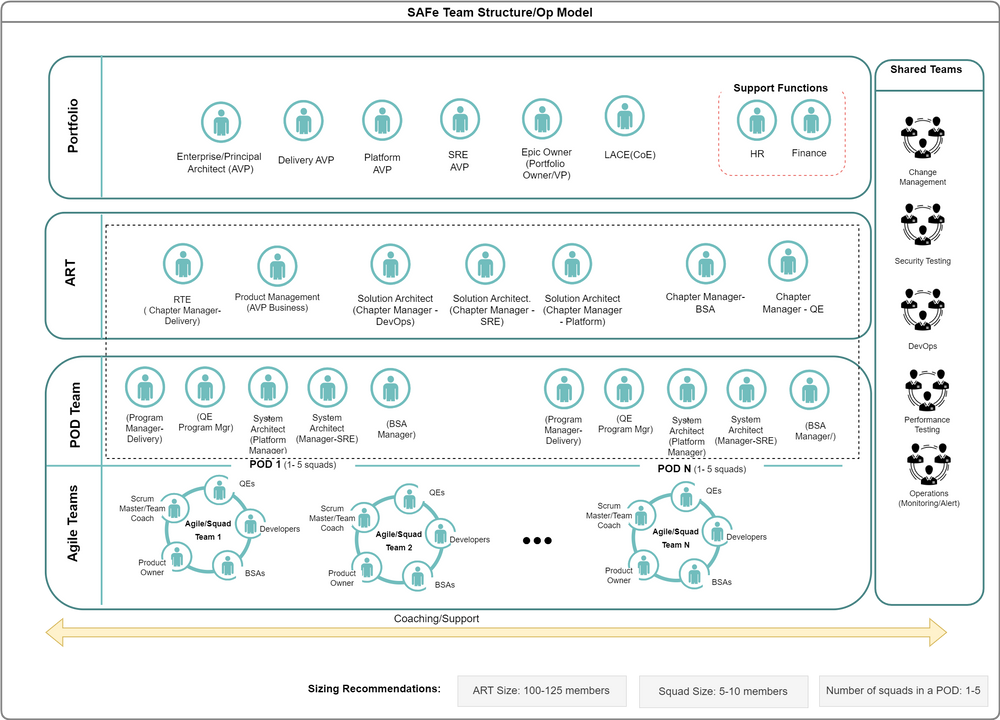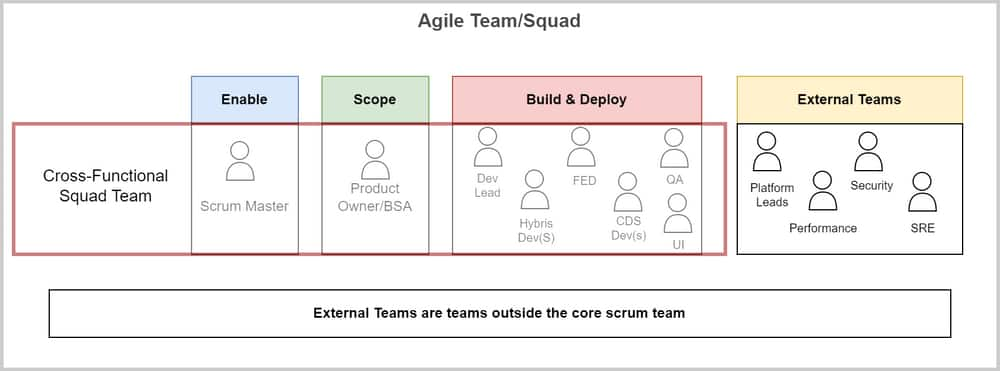
SAFe® Organization Structure:
Scaled Agile Inc recommended organization structure have three key levels, as shown above:
The Portfolio level
The Agile Release Train (ART) level
The Team level
The Portfolio level: This level represent the leadership groups, who are the decision makers, provide strategic directions and influences of change within the organization. Some of the key decision points & artifacts at this level are: Budgeting & Funding, Portfolio backlog (EPIC list), and Value stream governance
The Agile Release Train (ART) level: This level represent the mid-management groups, who do the tactical planning in realizing the strategy road-map. Some of the key decision points & artifacts at this level are: Product Vision & Roadmap, ART Backlog (Epic list), PI Planning, ART coordination and governance
The Team level: This level represent the Agile teams, who works on the Team backlog (User Story list) in converting them into working software/applications. Some of the key decision points & artifacts at this level are: Iteration Planning, Iteration Demo, Team backlog.
Points to remember: ART & Team level form the Essential SAFe® construct, which is the minimum set of processes, structures, practices and artifacts to roll out and kick start SAFe® adoption journey.

“Cross-Functional Agile Team/Squad”:
Is cross-functional, self-organizing team that define, build, test and support deployment of user stories.
The team consists of 5-10 people, excluding Product Owner & Scrum Master.
Team members bring different skills sets required to complete user story design and development, to form the
QA is part of the team and work within the team for validating functional & non-functional test scenarios (i.e., QA is not a separate team). The recommended head count ratio between QA and Dev should be 1:2.
Teams are organized around end-user value defined in terms of the product or service created & delivered to the end users.
Agile Team/Squads practice Agile mindset, behaviours and Engineering best practices.
Team applies Built-in Quality practices for Technical Agility
Agile Squads improve relentlessly via continuous learning cycles of Iteration Demos and Retrospectives





